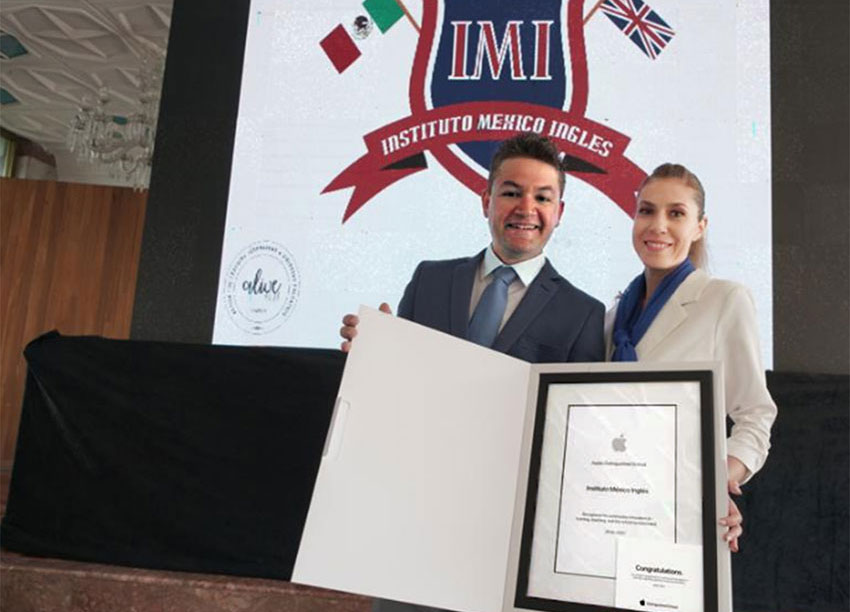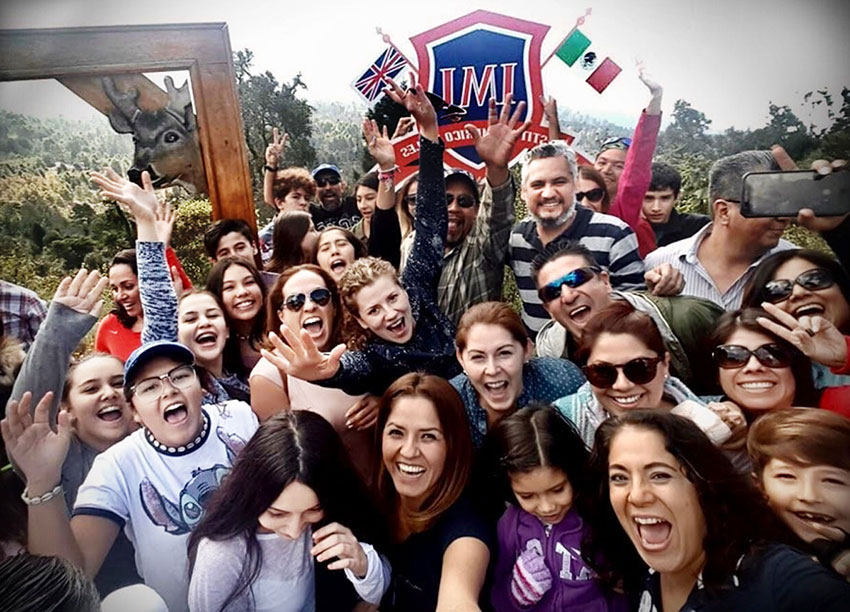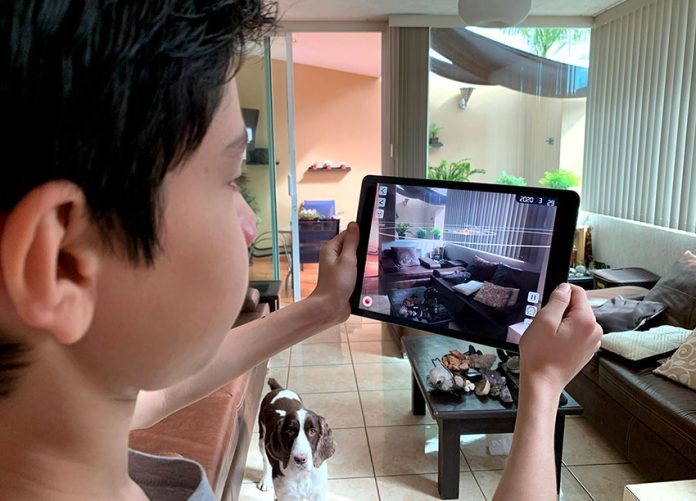The appearance of Covid-19 has forced almost all the world’s schools to switch to remote learning. For many of them this may have been quite a challenge, but not for Luis Medina, director of Guadalajara’s IMI College.
“It was no problem,” Medina told me. “It took only an hour to make the switch and things are going really well. Instead of firing teachers, I had to hire more staff.”
Not only is the college coping during the pandemic but, according to Medina, “Students are learning better than ever and they love it.”
Medina’s school is one of a network of over 150 Knotion schools, founded in Morelia, Michoacán, which have replaced traditional textbooks, teachers and curricula with iPads, coaches and a monthly challenge that transforms students into investigators and researchers.
“Knotion schools, which have spread from Mexico to Guatemala, Costa Rica, Colombia and El Salvador, have a complete technological and pedagogic infrastructure for distance learning, so our students can achieve 100% academic success even if they’re quarantined at home,” said Medina.

Mexico’s public schools would like to see similar results from their nationwide program to teach via television and YouTube. They use music, animation, puppets and dynamic, attractive instructors but, suggests Medina, they still follow the traditional lecture approach where the teacher is omniscient, a walking encyclopedia, and the student is expected to be a sponge with “no creativity, no critical thought, no different ideas — in fact no ideas at all.”
Private schools in Mexico are also having a tough time dealing with remote learning. “Their problem,” says Medina, “is that they had long been looking at technology as the enemy of education. They saw cell phones as distractions, social networks as competition and the internet as full of lies. Now they are putting a camera in front of a white board, but it’s still the teacher explaining away and the student is still expected to regurgitate a summary of the teacher’s wisdom.”
This isn’t the way people learn, points out Medina, and as a result the children turn to parents to explain what they didn’t learn from the teacher. The parent reacts by saying “Hey, wait a minute! Why am I paying the school to educate my children when I have to do it myself? I’m working here from home and I can see that my kids aren’t learning. I’m not going to pay the full tuition anymore.”
This notion, says Medina, is now spreading all over Mexico exponentially … and has given rise to the creation of micro schools. A group of families hire a teacher (and there are tons of them out there with no job) who goes to one of the homes and works with six or eight kids of mixed levels, charging much more money than that teacher could ever earn in a normal school. “Of course,” adds Medina, “they’ve worked it out so the kids will get credit for those classes.”
The newspaper Excélsior reports that 25% of the private schools in Mexico have already shut down permanently and 40% of the public schools are closing their doors. The private colleges can’t pay rent, maintenance, etc. At the same time, they can’t fire their teachers because they would have to give them decades of severance pay. So their only choice is to declare bankruptcy.
“What this means,” comments Luis Medina, “is that just here in the state of Jalisco, 10,000 teachers will be unemployed — and things will be getting much worse in the next few months.”

At IMI College things are quite different. “We’ve never had parents complaining that their children aren’t learning. One reason is because our teachers no longer operate as teachers, but rather as coaches or facilitators. The kids check their instructions for the day’s activities and the coach tells them what they will be trying to accomplish. Then everybody puts their shoulder to the wheel!”
Medina tells his teachers they should think of both themselves and the students as apprentices. “The students don’t have to wait for the teacher to tell them what’s what. Instead, the students and the teachers pose questions, just the way Socrates did. If you ask Google the state capitals, you’ll find them immediately, but if you ask Google a really deep question, a question that invites reflection and critical thinking, you’re not going to get a quick and simple answer.”
What do parents see when their children are learning remotely? Says Medina: “They see their child talking and participating, not sitting there listening to a teacher drone on. No, that child is working with his companions; they are sharing their findings; they are saying, ‘I’ll take the photos and you’ll do the editing and Bernardo will publish it on social media.’
“They know how to dialog, how to communicate, how to resolve problems. So the parents find their kids are no longer complaining that they’re not learning, but quite the opposite: they see their kids totally involved. Instead of asking their parents to explain something, they’re saying, ‘Hey Mom and Dad, I’m investigating water consumption and I think we should try to participate in this challenge, to see if we can reduce the amount of water we use at home. I want to look at our old water bills to see how many cubic meters we’re using and then I’ll document the changes we’ll be making month by month and I’m going to publish all of it on the web.’”
“The parent hears this and says, ‘Wow, my little girl is taking action!’ And all this may be tied to a study of mathematics: maybe they are studying volume, how to transform milliliters into cubic meters. So this is math, but math applied to life.”
Medina says his students are learning a lot from a system called Augmented Reality. On the screen of their iPad they see things in their environment such as a table or a sofa, but the image is enhanced by computer-generated perceptual information. On their table they may see a detailed representation of a river cutting its way through a landscape. They may now be asked to plan the construction of a dam on the river. By trial and error they discover that placing the dam at one point might produce great benefits or huge problems, and they can see the results of their choices with their own eyes.
[soliloquy id="122513"]
Augmented Reality makes it easy for IMI students to study chemistry, physics or biology right at home. “This week,” Medina told me, “our seventh-graders were dissecting a virtual frog. They open their iPad and there they see the frog on their desk. Then they anesthetize it and use a scalpel to open it up and go deep inside it, to study its heart and its lungs. In physics, they were working on a Tesla coil. They learned how to connect the components together correctly and to measure amps and volts. For chemistry they use the Virtual Chemistry Lab developed by experts at Carnegie Mellon whose aim was to ‘create learning environments where college and high school students can approach chemistry more like practicing scientists.’
“This week in chemistry they were making aspirins. So they were using different chemical reagents and they had to play around with them to figure out what percentage of each they needed for creating an aspirin.”
Medina contrasts the challenge to make an aspirin with the standard approach where the students sit and listen to a teacher spouting formulas and talking about phenyl salicylate and Erlenmeyer flasks. “Our students set up their Augmented Reality lab on a table. They take a good look at the beakers and flasks and they play around with the reagents and then they say, ‘Chispas! So that’s what happens when I mix these two together.’ And yes, maybe they do blow up the whole lab — it happens — but there’s no harm done and there’s a lot they learn.”
Knotion school students use Augmented Reality to investigate chemistry one day and perhaps go looking around inside the pyramids of Egypt the following day, using x-rays to examine a mummy. They can also study a black hole while sitting in their kitchen, not only looking at it, but figuring out how it works.
“Because of all this, we are not affected by the pandemic,” says Luis Medina. “and we have a long waiting list of parents who want to send their children to us. We’ve done so well that our little college was named an Apple Distinguished School, meaning that it is considered one of the most innovative schools in the world … and, in fact, we were one of three Mexican schools recently invited to participate in a virtual global meeting organized by Apple — and that is something we are really proud of!”
The writer has lived near Guadalajara, Jalisco, for more than 30 years and is the author of A Guide to West Mexico’s Guachimontones and Surrounding Area and co-author of Outdoors in Western Mexico. More of his writing can be found on his website.
